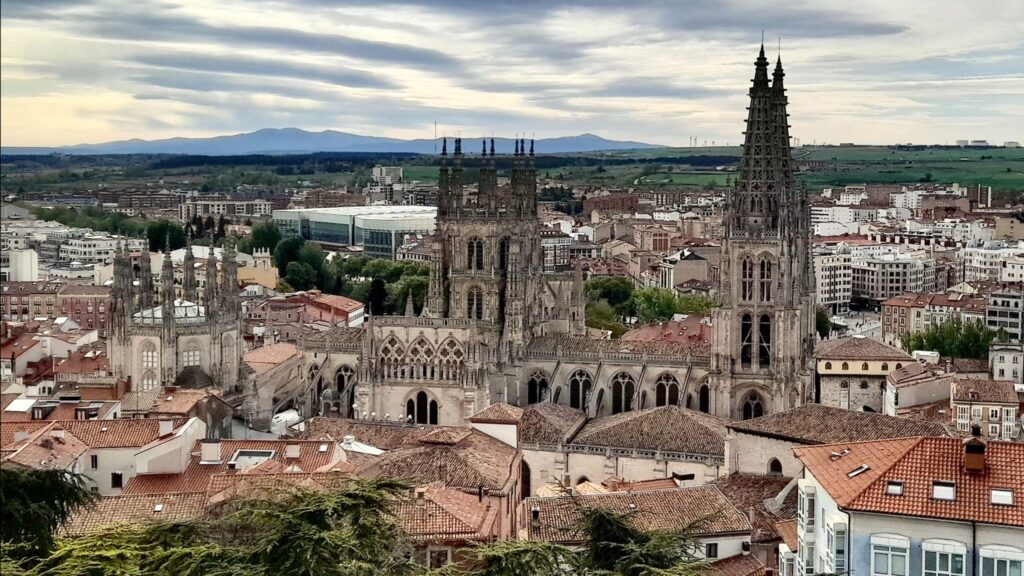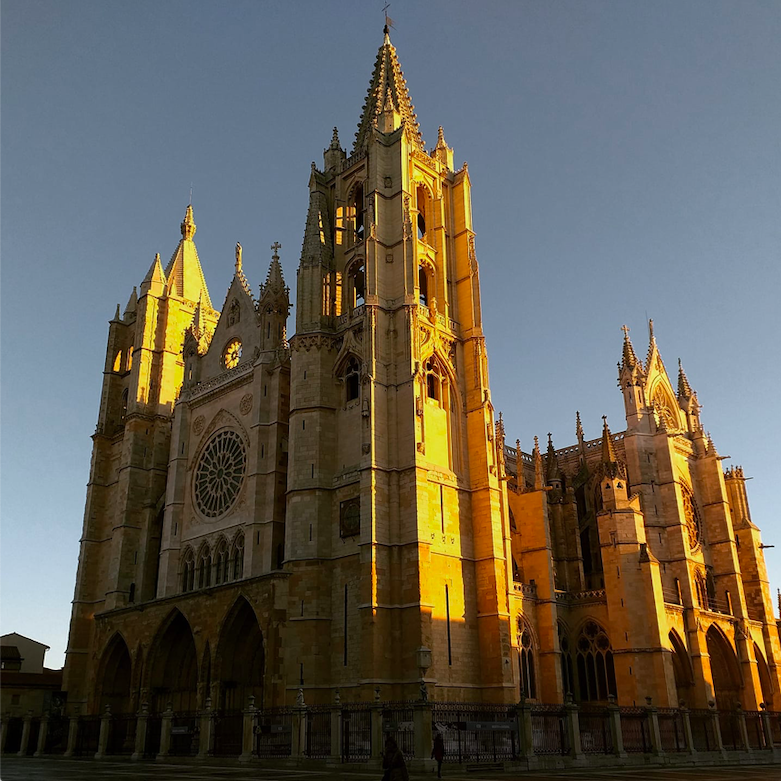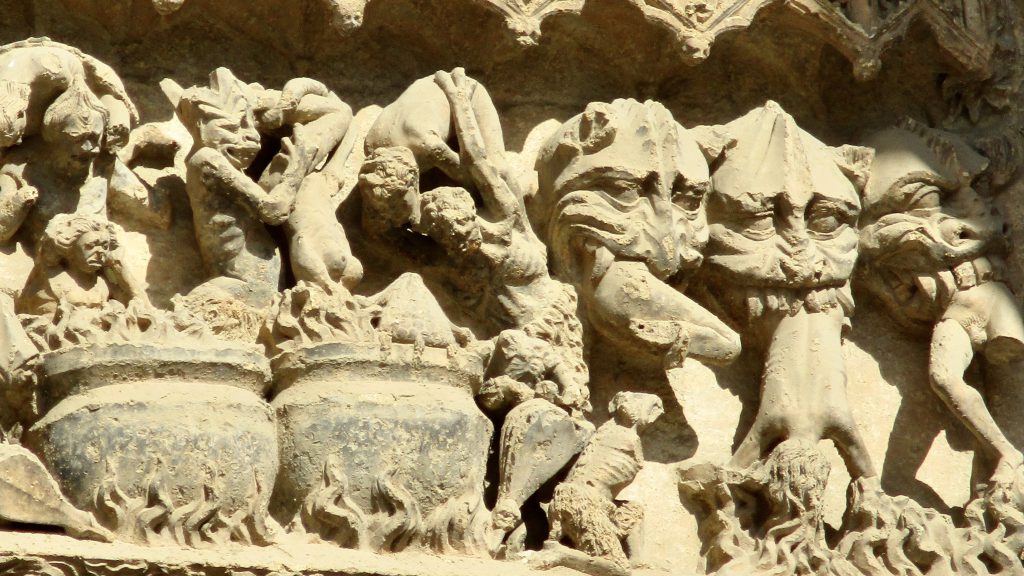Let’s start with Burgos, but only because it comes first in alphabetical order.
Burgos Cathedral
Burgos is proud to be the only city in Spain that boasts a cathedral that in itself is a World Heritage Site. The reasons that make the Burgos Cathedral unique are twofold: the cathedral not only ”sums up the entire history of Gothic art”, but it is also ”intimately linked to the history of the Reconquista and Spanish unity” (UNESCO).

If there is a name that is associated with the Castilian Reconquista, that is Don Rodrigo Díaz de Vivar, better known as El Cid. After his epic death in Valencia, El Cid was brought and buried in Burgos. His remains are now found in a humble tomb in the transept of the cathedral.

We explore Burgos on our Chapter 2 Tour and our Camino Horizons Tour. The city is a major starting place for the pilgrimage to Compostela, so expect to see lots of pilgrims around town!. Burgos is easily reachable from Madrid and Bilbao by bus or train.

León Cathedral
On the other hand, León boasts graceful perfection and unity. Cathedrals in medieval times were not only built over a span of a century or more, but were frequently altered over time to adapt to the city’s needs (congregation size) or the aesthetics of the period. In this manner, cathedrals often present a mishmash of styles that may start in the Middle-Ages and end in the Modern Era. This does not happen in León, with the cathedral presenting an almost perfect 13th century Gothic unity.

However, León Cathedral’s indisputable claim to fame is its 1,800 square meters (20,000 square feet) of original medieval stained glass windows. Needless be said that this is a rarity among Gothic cathedrals and a real treat for our Pilgrims.

We meet our Pilgrims on the Camino de Santiago and our Kinder Camino Tours in the city of León. The reason for this is that León is a major highlight on the Camino de Santiago, and it is well communicated with Madrid by high-speed train.

*Gothic art was the main art style in Western Europe between the 13th and 15th centuries.





